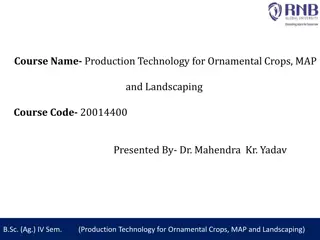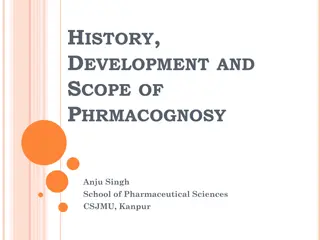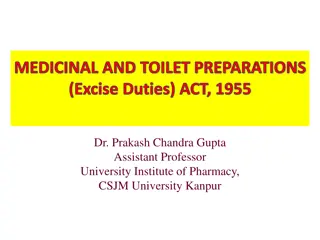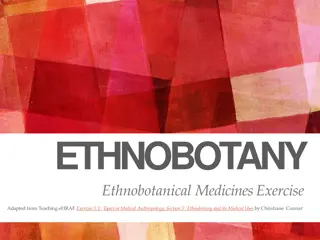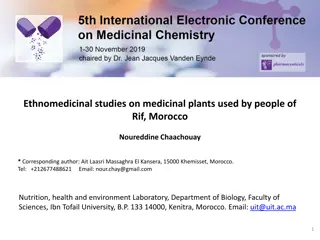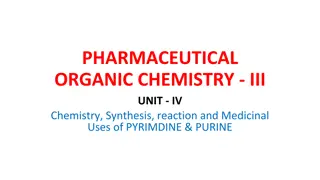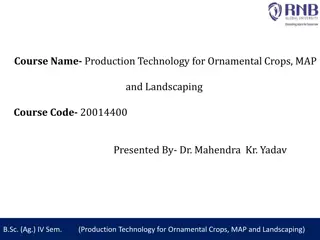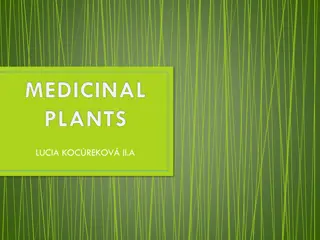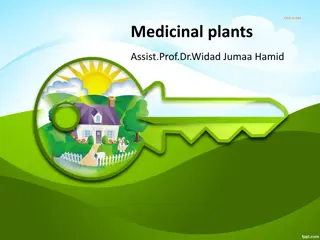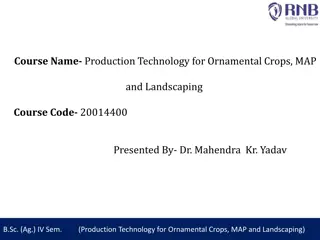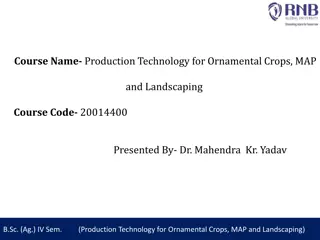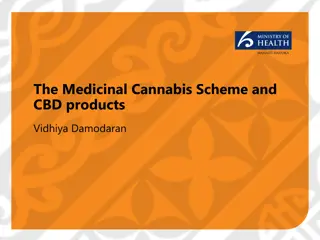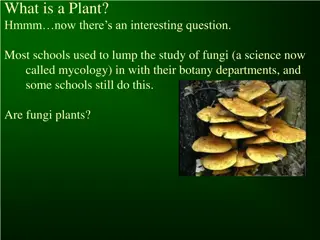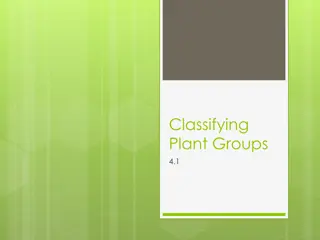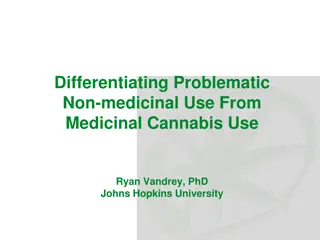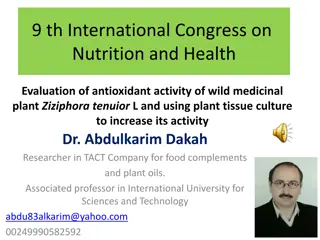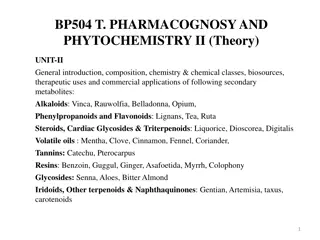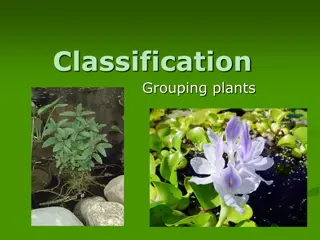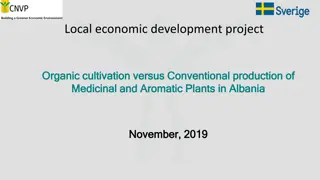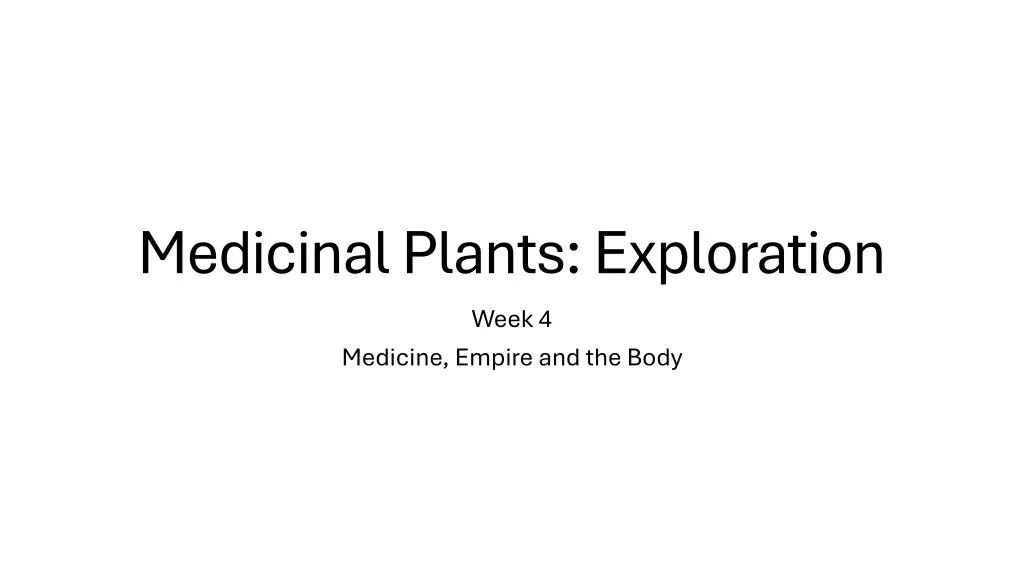
Exploration of Medicinal Plants: Impact on European Medicine
Discover how exploration and exchange of medicinal plants between continents influenced European medicine, education, and natural history. Learn about the integration of indigenous medical knowledge into European practices and the importance of botanical gardens in medical education. Explore the shift towards first-hand observation and the role of physicians in studying natural history through anatomy and chemistry.
Download Presentation

Please find below an Image/Link to download the presentation.
The content on the website is provided AS IS for your information and personal use only. It may not be sold, licensed, or shared on other websites without obtaining consent from the author. If you encounter any issues during the download, it is possible that the publisher has removed the file from their server.
You are allowed to download the files provided on this website for personal or commercial use, subject to the condition that they are used lawfully. All files are the property of their respective owners.
The content on the website is provided AS IS for your information and personal use only. It may not be sold, licensed, or shared on other websites without obtaining consent from the author.
E N D
Presentation Transcript
Medicinal Plants: Exploration Week 4 Medicine, Empire and the Body
Overview - Europeans often recontextualised indigenous medical knowledge and related it to their own medical thinking. - The new plants led to changes within medical education e.g the growth of botanical gardens. - The motivation for discovering and importing new plants was often financial. - Despite opposition to these foreign remedies , their importation to Europe increased.
Physicians and Natural History, in Nick Jardine et al (eds), Physicians and Natural History, in Nick Jardine et al (eds), Cultures of Natural History History (1996), pp. 91 (1996), pp. 91- -105. 105. Cultures of Natural Harold J. Cook Harold J. Cook Quote: natural history came to mean an account of nature, based upon information acquired by enquiry, especially through observation (pg99-100) The intellectual movement humanism that started in the 15thC encouraged many early physicians to go back to ancient Greek and Latin texts to find these original, ancient remedies. This is one of the reasons why Europeans wanted to find new trade routes to the East in south and west Asia. They eventually went to the Americas and found previously unknown to them medical plants e.g guaiacum and cinchona bark, that were exported back to Europe. These new botanicals impacted education. By the later 16thC there were botanical gardens at every university that wanted to be seen as providing excellent medical education. Physicians began restricting/ limiting what apothecaries could sell , claiming it was for the public s good and that their education made them knowledgeable enough to do this. What was considered fact changed , there was a shift away from what was inferred to first hand observation/knowledge. Physicians supported this and used Hippocrates as an example of observation. In the later 16thC anatomy and chemistry became key for physicians studying natural history. By the 17thC increasing numbers of physicians used chemistry as a form of analysis and a way to come up with new remedies. Many physicians were part of early modern scientific societies.
Cartier, Champlain, and the Fruits of the New World: Botanical Exchange in the 16th and Cartier, Champlain, and the Fruits of the New World: Botanical Exchange in the 16th and 17th Centuries, 17th Centuries, Scientia Canadensis Scientia Canadensis 31 (2008), 27 31 (2008), 27- -47 47 Victoria Dickenson Victoria Dickenson Quote: Prior to the development of Linnaean taxonomies, resemblance was the most obvious principle on which classification of plants and animals was based. (pg 33) Article focuses on/ draws heavily from the observations and consequences of Cartier s voyages to new France , now known as Canada between 1534 and 1541 as well as Champlain s voyages from 1603 until his death in Quebec in 1635. Both Cartier and Chaplain seem to have drawn from their own knowledge of European plants and climates to understand the sometimes similar or more radically different plants of the New World. Both Cartier and Chaplain seemed impressed by new France due to the abundance of vegetables. They both failed to find northern routes to the east but did bring back new plants to Europe. Utility, rarity and fashion were key factors that new botanicals were judged on. Utility included medicinal and culinary purposes. An example of popularity s significance is the Jerusalem artichoke s being very popular initially but falling out of fashion. Some plants were easier to import and cultivate in Europe, such as peppers, corn, squash and beans. Some plants similarities to European plants made this easier , such as squash being grouped together with melons and cucumbers. While other exotic fruits took centuries to cultivate, such as Bananas and Pineapples. If plants couldn t be shipped as seeds, then other methods that were based off of European practices were used.
'The Early Modern Debate about Foreign Drugs: Localism versus Universalism in 'The Early Modern Debate about Foreign Drugs: Localism versus Universalism in Medicine, Medicine, Lancet Lancet (July 10, 1999), 149 (July 10, 1999), 149- -151. 151. Andrew Wear Andrew Wear Quote: Despite the complaints against exotic remedies, which continued into the later 17thcentury among radical English physicians, they were imported in ever increasing quantities. (pg 151) One of the economic motivations for European voyages abroad were to find spices and remedies. For example, The Spanish Crown realized the significant profits they could make from new remedies , which is why they order officials to search for medicinal plants e.g guaiac wood, a cure for syphilis. Exotic remedies stayed exotic as it was better for business. Indigenous knowledge/ understanding of medicinal plants was largely ignored. Instead remedies from America and the East Indies were recontextualized under the European humoral system of medicine taught in universities. There was resistance to the use of foreign remedies: o Opposition as the remedies could be falsified and fakes could be sold. o Opposition as the remedies were foreign and so could not suit European bodies. o Religious opposition, with Ecclesiasticus ch 38, 4 cited often, The Lord hath created medicines out of the earth . That foreign medicine went against God s providence and that the necessary medicine could be found locally. o Opposition as these remedies were expensive and so inaccessible to the poor. Europeans imported the remedies but did not import the indigenous medical theories as European knowledge was seen as superior. Historians could argue this is an early example of western medical imperialism.
T Huguet T Huguet- -Termes, New World Termes, New World materia from scholarly reception to practical impact , Med Hist., 45 (PMC, 2001), pp. from scholarly reception to practical impact , Med Hist., 45 (PMC, 2001), pp. 359 359- -376 376 materia medica in Spanish renaissance medicine: medica in Spanish renaissance medicine: "The Spaniards rejected the magico-religious context in which the plants were used by the indigenous people of America, and they also insisted on incorporating these plants into the Galenic humoral system." -T Huguet-Termes Spanish colonisers dismissed indigenous medical practices, instead trying to forcefully insert them into pre- existing medicinein Europe. This limited the acceptance of effective treatments from colonies. Nicolas Monardesplayed a large role in introducing many American drugs to the European world (even if his motives were financial). Seville was ahub for the distribution of New World medicinal plants in Europe according to Monardes. European settlers often had to rely on indigenous knowledge due to the impracticality of importing European drugs. The importation of New World plants such as liquid amber also influenced perfumery (as well as medicine) highlighting the broader uses of colonial plants. Much of the trade of these plants imported into Europe were sequestered to merchants and the common people. - - - - - -
Pablo Gomez, Pablo Gomez, The Experiential Caribbean: Creating Knowledge and Healing in the Early The Experiential Caribbean: Creating Knowledge and Healing in the Early Modern Atlantic, ( Modern Atlantic, (University of Carolina Press 2017) University of Carolina Press 2017) "The successful medicines of the time represented compounds of communal nuances that attempted to balance the social and the environmental through procedures that included ritual performances." Healing was a communal activity, based in not only physical medical remedies, but also social and environmental factors, often employingrituals. European practitioners stole medicinal knowledge from colonies, ignoring their cultural significance. This is an example of how colonialism wasn't always material but was also intellectual. The strength of medicinal substances was heavily reliant on the specific social and cultural contexts of the Carribean. This meant they were of less value to colonising powers. Caribbean healers drew power from their ability to work with natural materials, which have the potential for healing and harm. This made them well-respected and feared within society, Healing tools were rooted in mystical and occult beliefs, with indigenous peoples contributing their effectiveness to spiritual forces, reflecting a balance of science and spirituality in early modern medicine in the Caribbean.
Comparisons Comparisons - Cook analyses the transformation of European medical education through empirical knowledge, while Gomez focuses on how colonial intellectual theft undermined the cultural integrity of indigenous practices, and their exploitation. - While Wear, Cook and Huguet-Termes all focus on how Europe implemented or dismissed indigenous practices, Cook placed more of an emphasis on intellectual curiosity as a motivator, while Wear and Huguet Termes focus more on economic and cultural resistance to indigenous remedies. - Dickenson and Gomez both explore how classification and healing practices were based in context, with Dickenson exploring the scientific view, while Gomez wrote about the communal natural aspect.
Questions How did these new botanicals change how Europeans approached medicine? How did European perceptions of indigenous medical knowledge shape the development of European and colonial medical practices?

